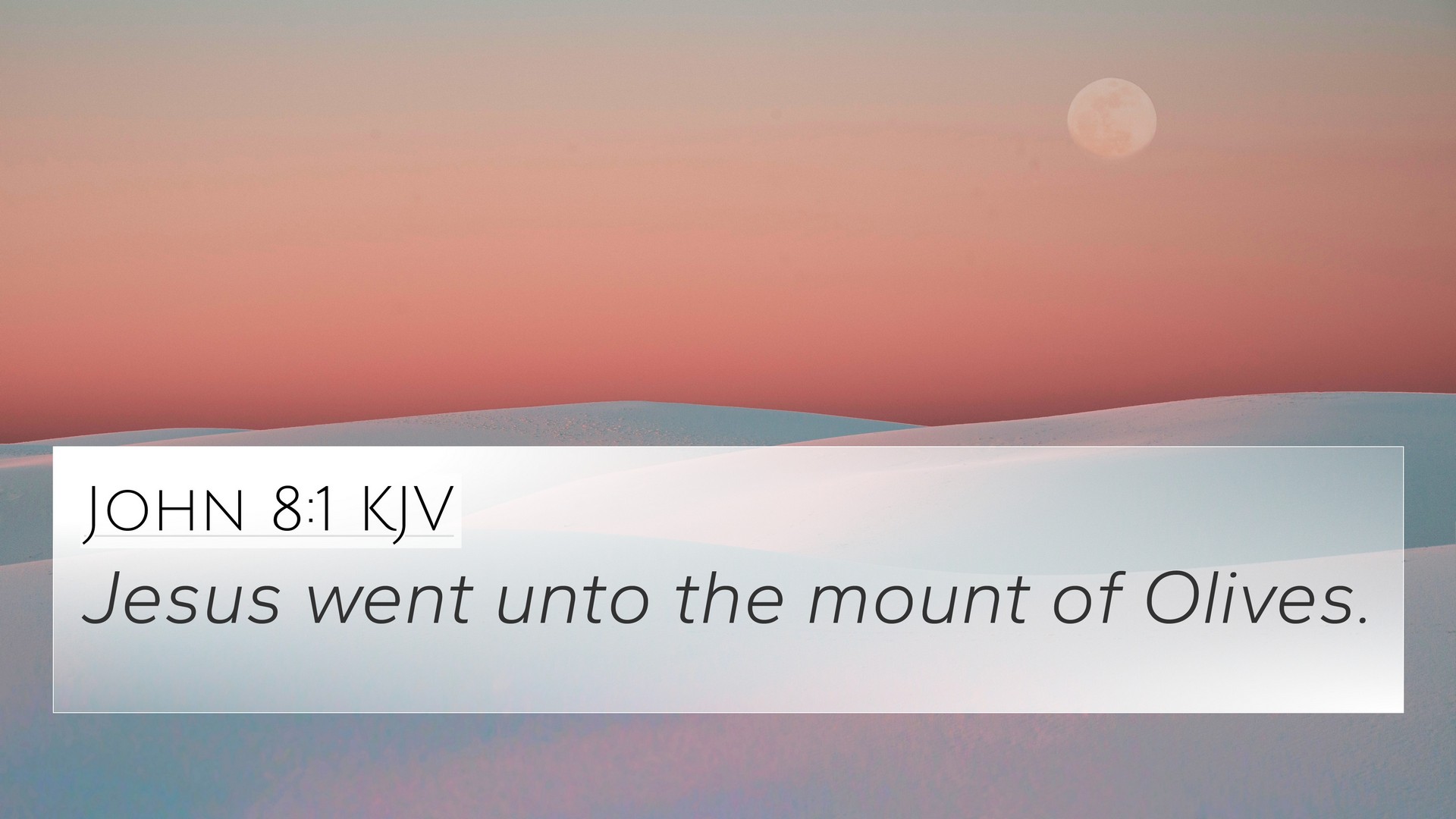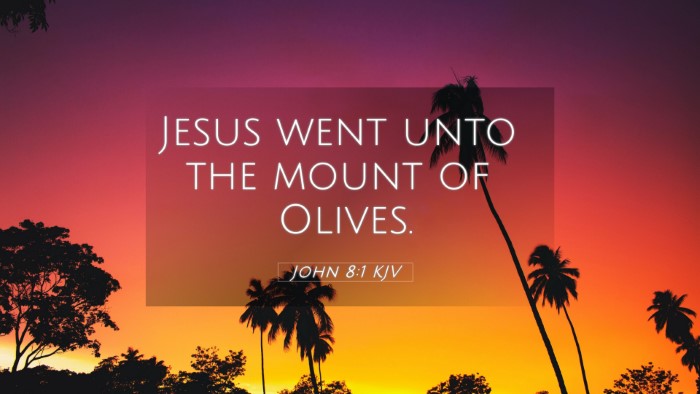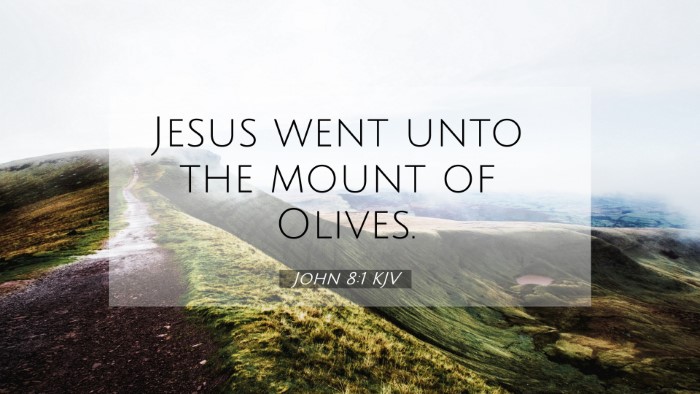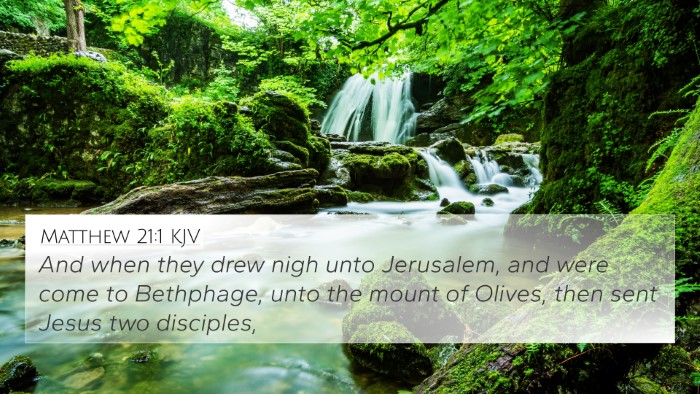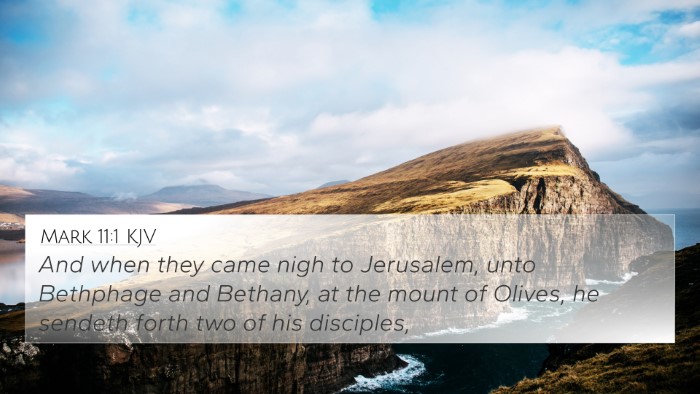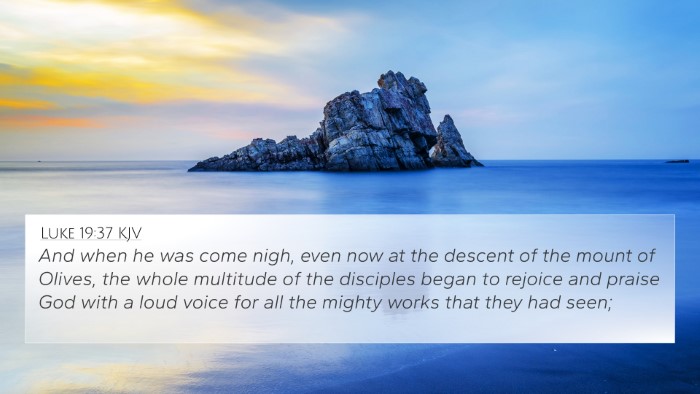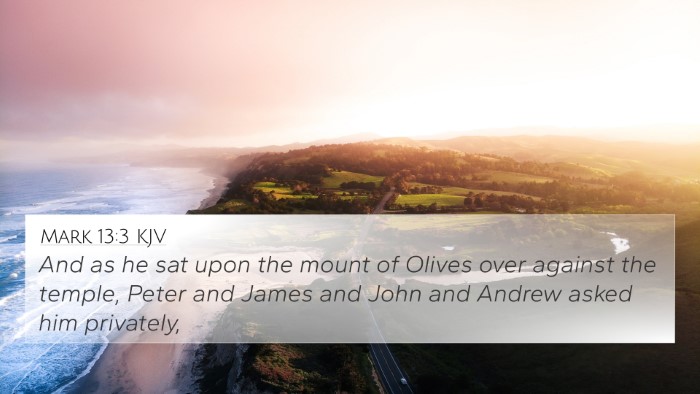Understanding John 8:1: Insights from Public Domain Commentaries
John 8:1 states, "But Jesus went to the Mount of Olives." This verse, though seemingly simple, sets the stage for profound teachings and narratives that follow, highlighting significant thematic connections within the Bible.
Contextual Significance
According to Matthew Henry, this verse indicates Jesus' departure to a place of solitude, allowing Him to be alone with God in prayer before confronting the challenges posed by the religious leaders and the moral failings of humanity. The Mount of Olives serves not only as a geographical location but symbolically represents a place of spiritual retreat and reflection.
Albert Barnes adds that the Mount of Olives is a place well-known in the Jewish faith, being associated with significant events in Jesus' life, including His prayer in Gethsemane and ultimately His triumphant return during the Second Coming. These elements contribute to the understanding of Jesus as both God and man, signifying His humanity in seeking divine connection.
Adam Clarke provides additional insight into the cultural and spiritual implications of this location. He emphasizes that Jesus often retreated to this mountain for prayer, modeling for believers the importance of taking time away from the busyness of life to connect with God.
Thematic Bible Verse Connections
This single verse is rich in themes that resonate throughout scripture, including:
- Solitude and Prayer: Mark 1:35 - “And in the morning, rising up a great while before day, he went out, and departed into a solitary place, and there prayed.”
- Seeking God’s Will: Luke 22:39 - “And he came out, and went, as he was wont, to the Mount of Olives; and his disciples also followed him.”
- Restoration of Spiritual Focus: Matthew 14:23 - “And when he had sent the multitudes away, he went up into a mountain apart to pray: and when the evening was come, he was there alone.”
- Preparation for Trials: John 17:1 - “These words spake Jesus, and lifted up his eyes to heaven, and said, Father, the hour is come; glorify thy Son, that thy Son also may glorify thee.”
- The Return of Christ: Zechariah 14:4 - “And his feet shall stand in that day upon the mount of Olives, which is before Jerusalem on the east…”
- Divine Presence in Solitude: Psalm 46:10 - “Be still, and know that I am God: I will be exalted among the heathen, I will be exalted in the earth.”
- Qualifications of Leadership: Exodus 18:19 - “Hearken now unto my voice, I will give thee counsel, and God shall be with thee…”
Bible Verse Cross-References and Connections
John 8:1 serves as a significant foundation for exploring connections between various Bible verses. The themes found in this verse can be cross-referenced with many others, illustrating the comprehensive nature of scripture:
- John 7:53 - 8:11: The narrative of the woman caught in adultery follows this verse, showing both the grace and truth in Jesus' ministry.
- Hebrews 4:15-16: These verses affirm Jesus' sympathetic understanding of human struggles, as He faced trials while embodying divine authority.
- Matthew 6:6: This verse emphasizes the importance of private prayer, echoing the sentiments of Jesus' retreat to the mountains.
- Romans 12:12: This verse encourages believers to be steadfast in prayer, paralleling Jesus’ example of continual dependence on God.
- 1 Thessalonians 5:17: “Pray without ceasing” aligns with the spiritual practice observed by Jesus in His solitude.
- Matthew 26:36: In Gethsemane, Jesus displays the ultimate submission to God’s will, reinforcing the significance of His retreats for prayer and strength.
- James 1:5: Encourages believers to seek wisdom from God, mirroring the lessons learned during moments of isolation and connection with the Divine.
Conclusion
In summary, John 8:1 illustrates the profound need for believers to find solitude and connect with God, a theme echoed throughout scripture. The mention of the Mount of Olives reminds us of the importance of retreating for prayer and reflection amidst life's challenges. This singular verse serves as a springboard for deeper theological exploration and inter-Biblical dialogue, revealing intricate connections among various scriptures.
